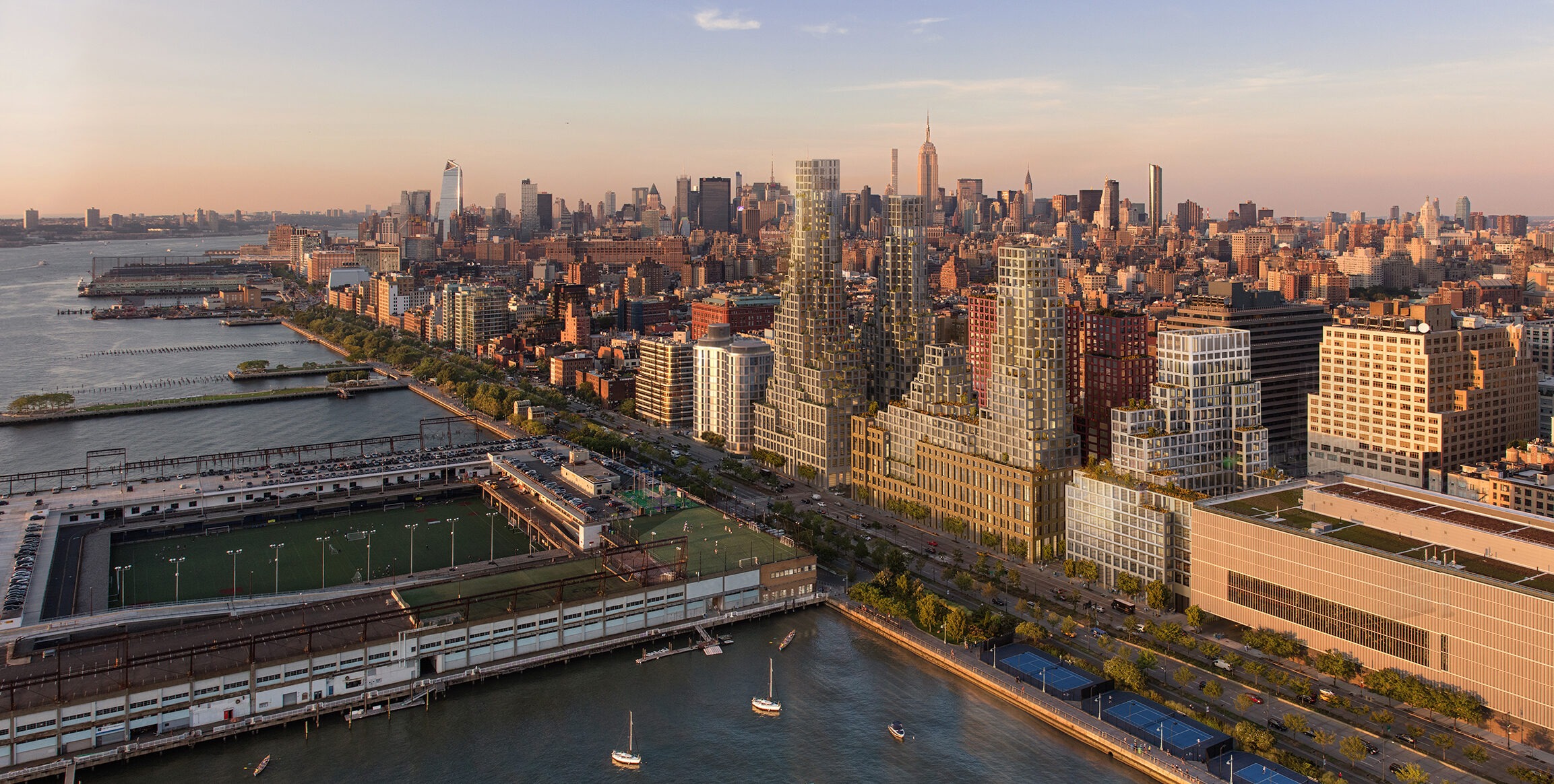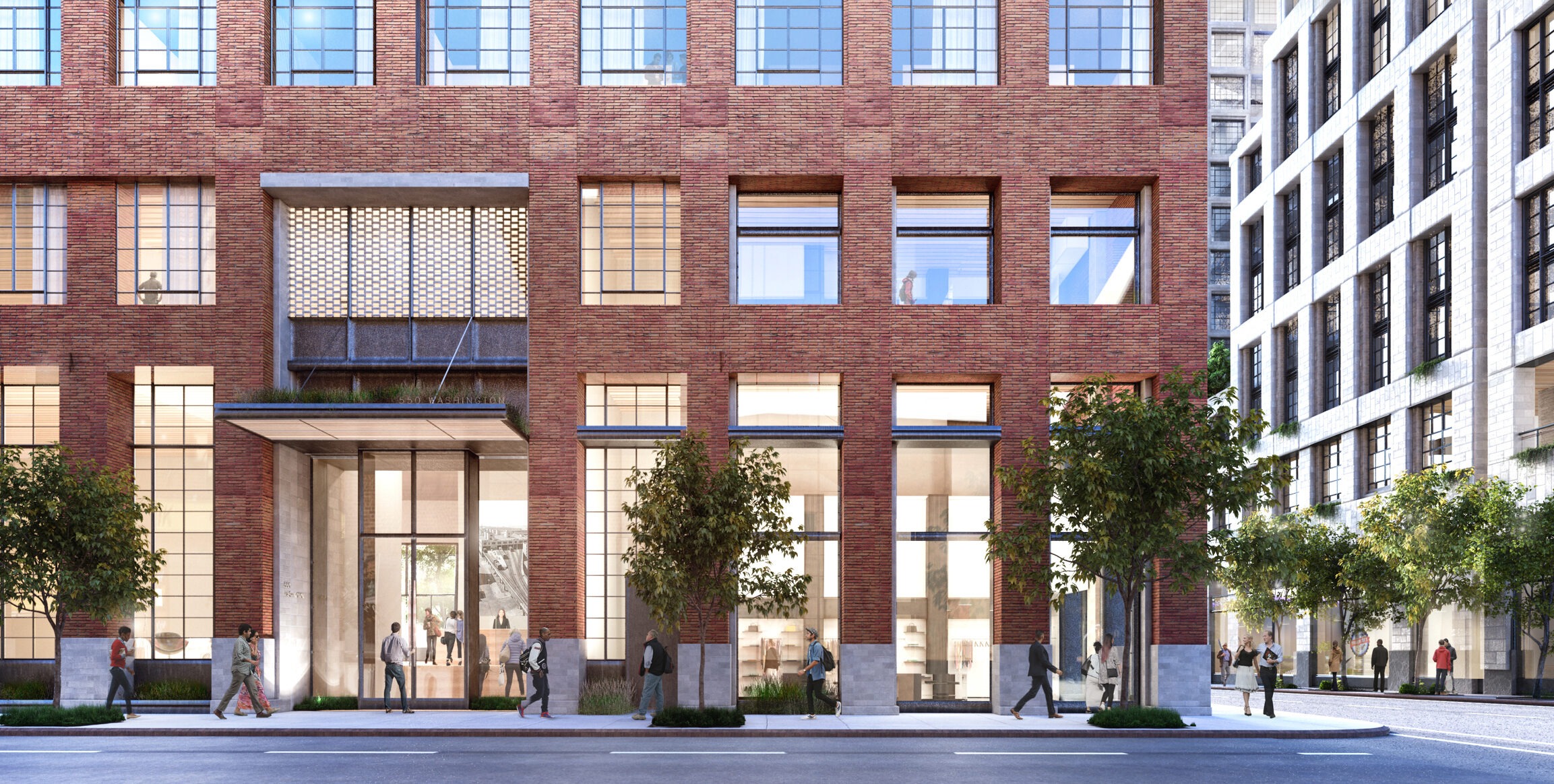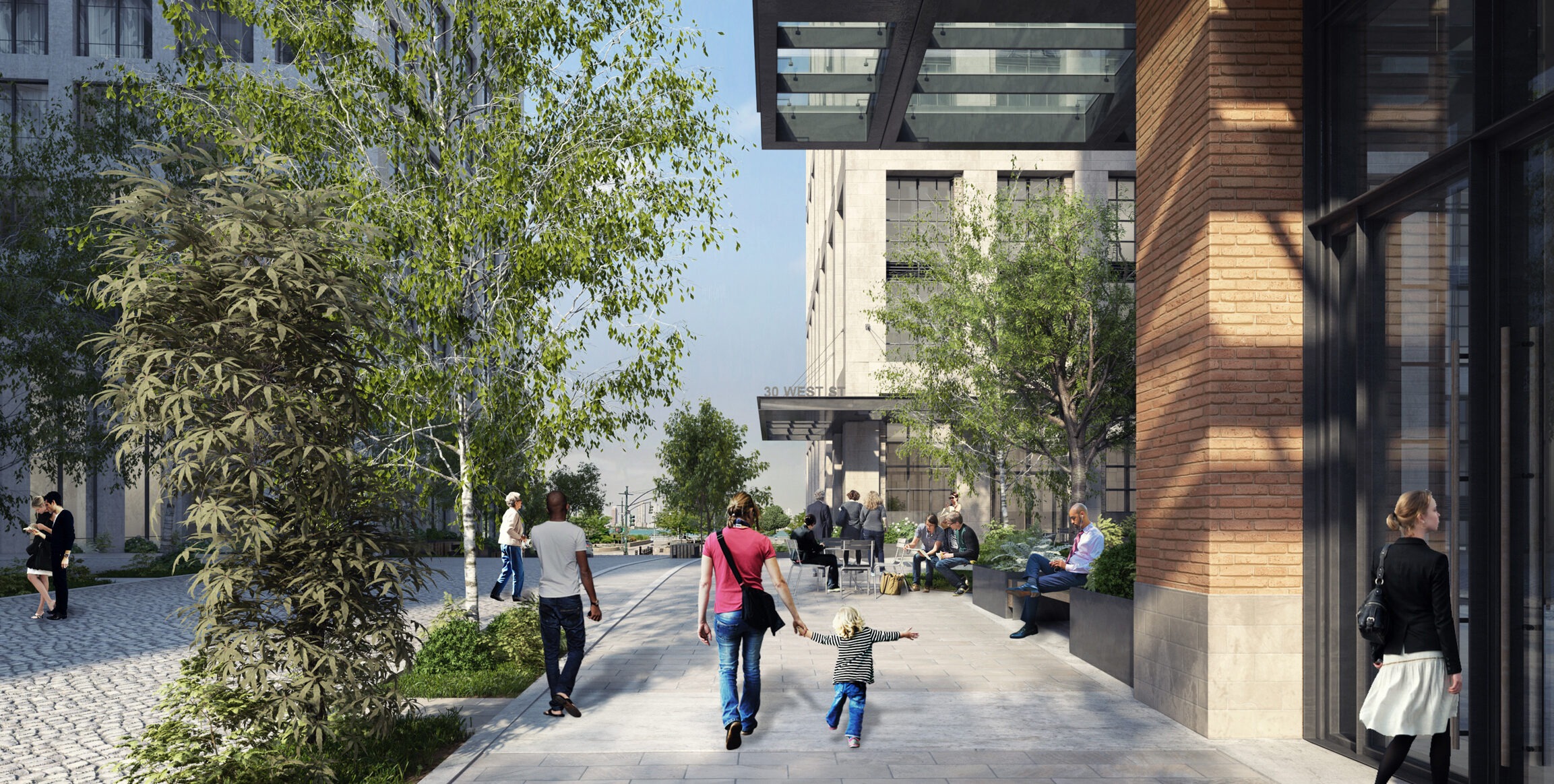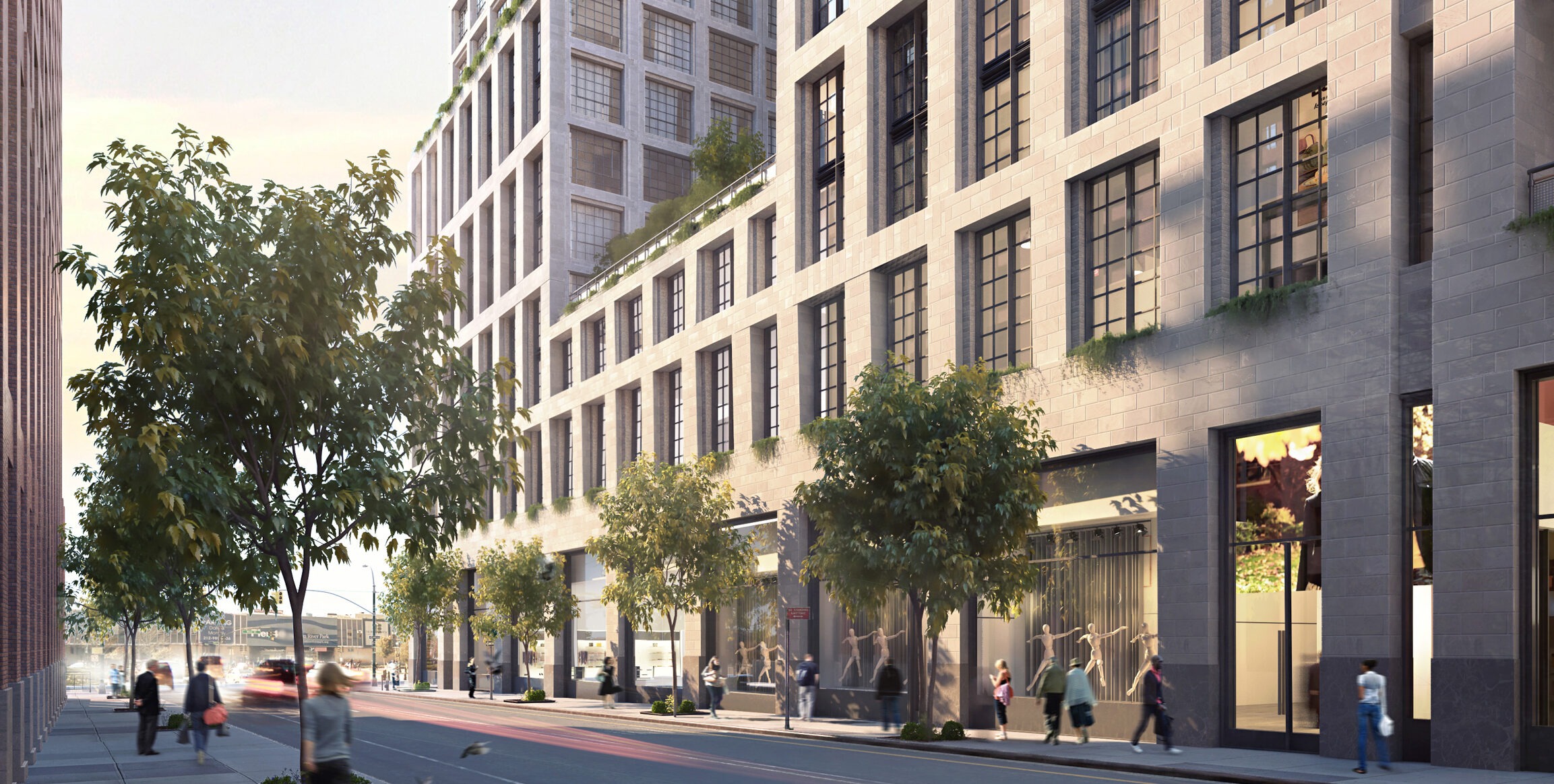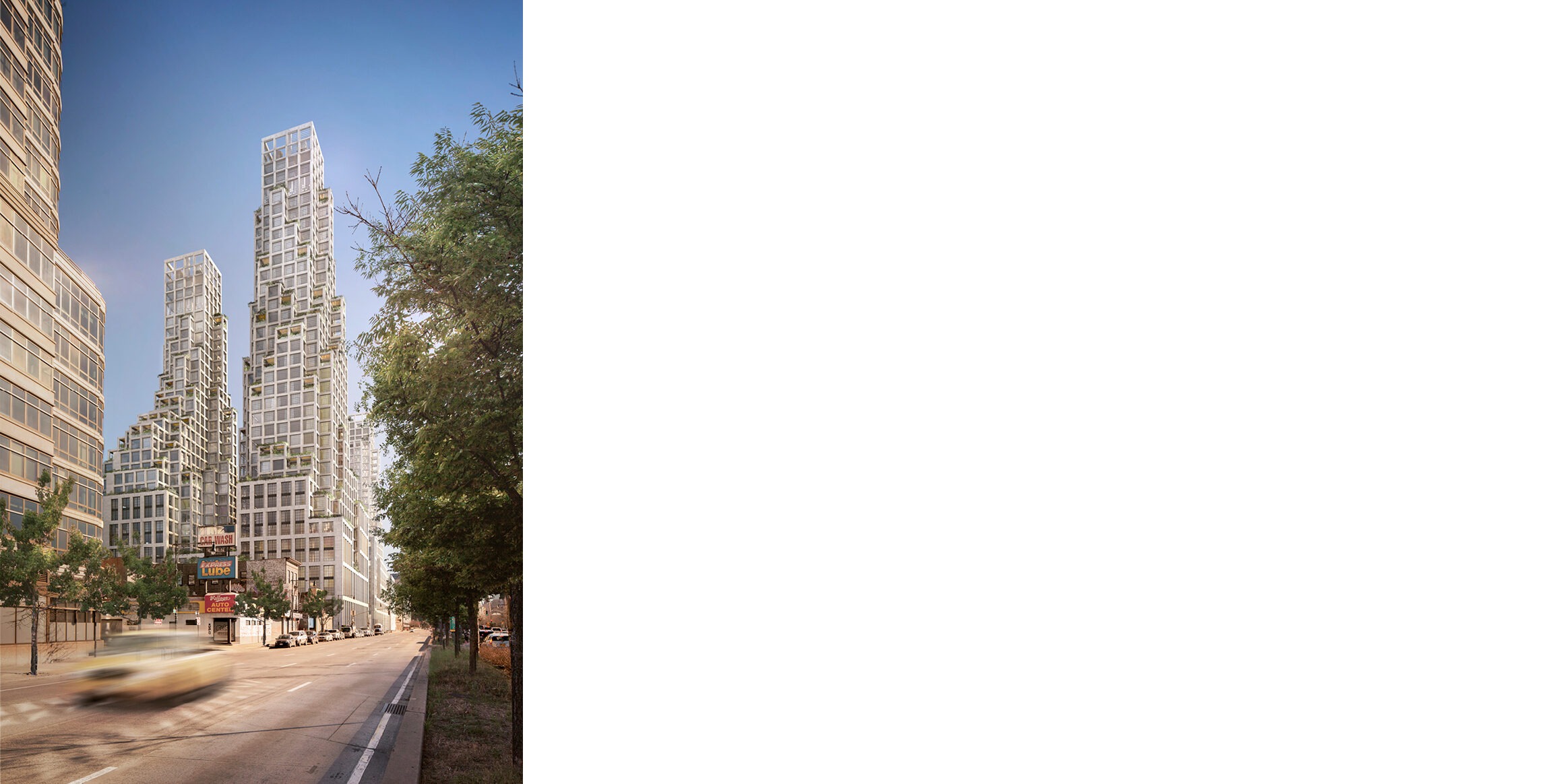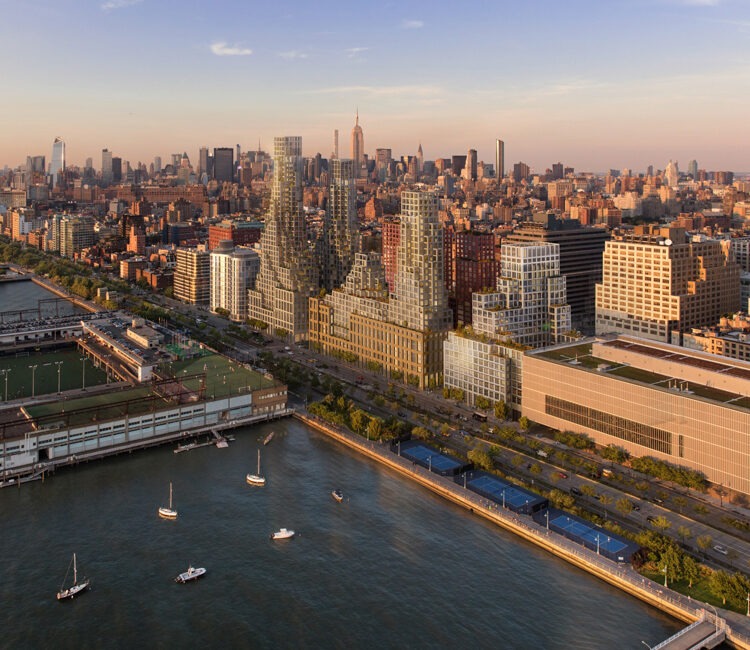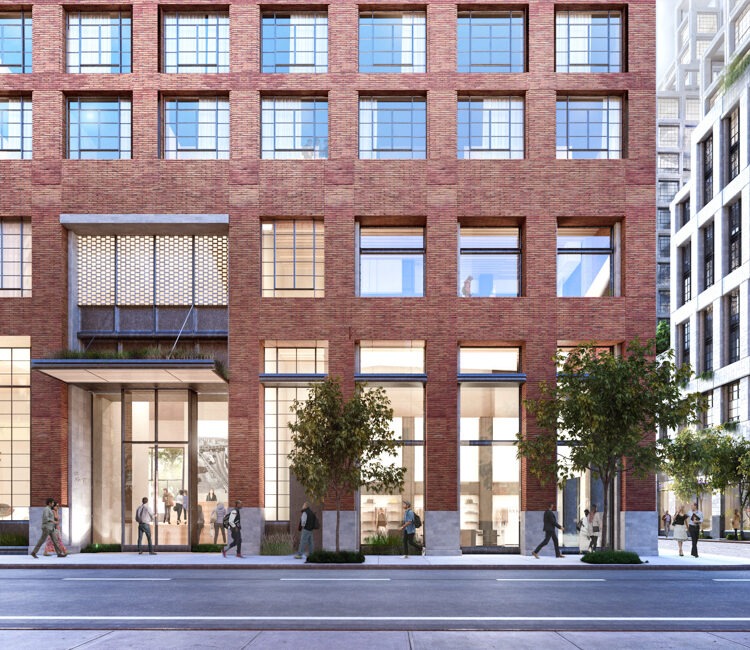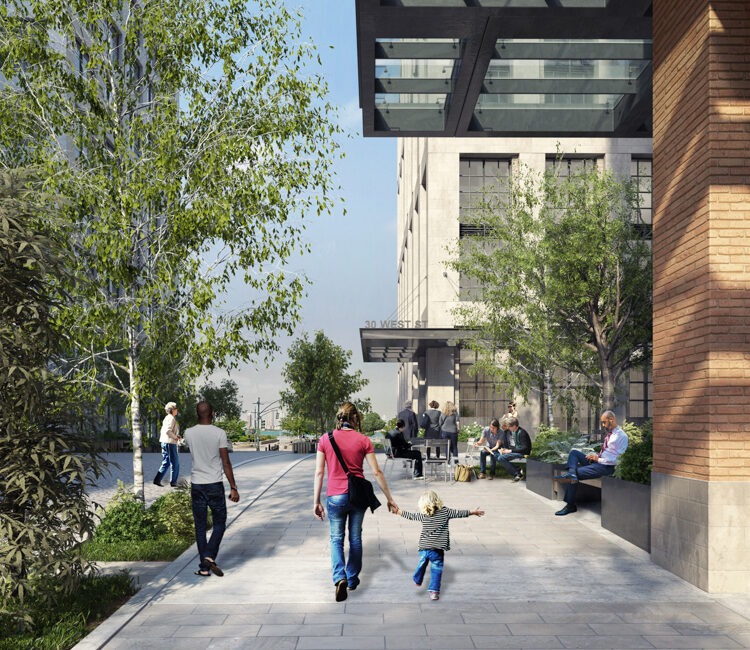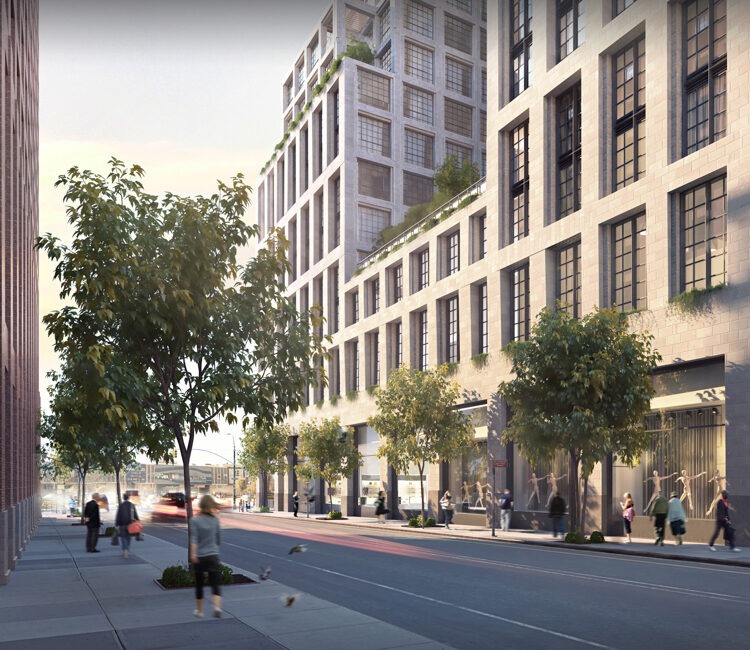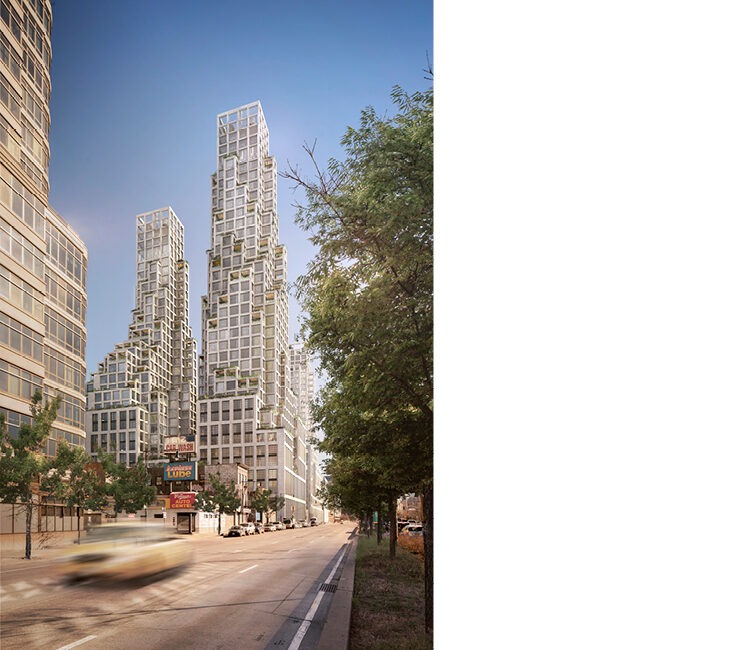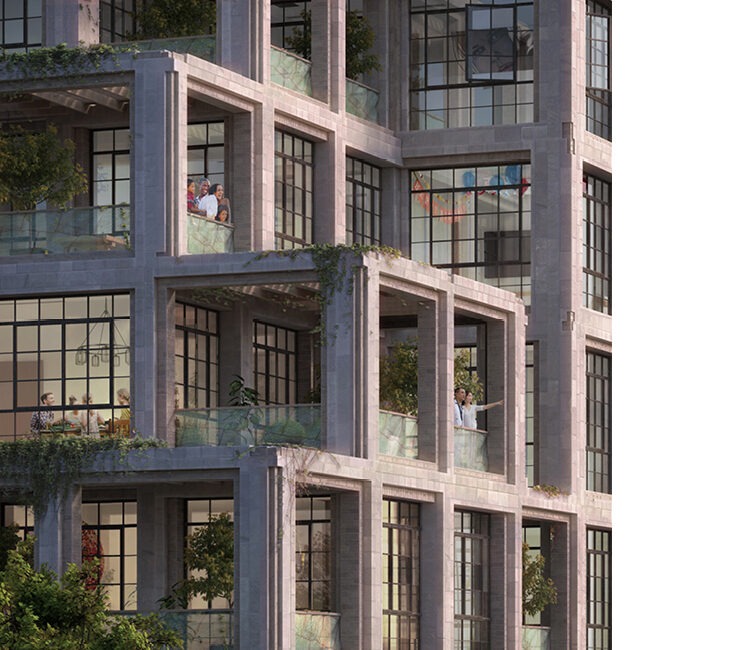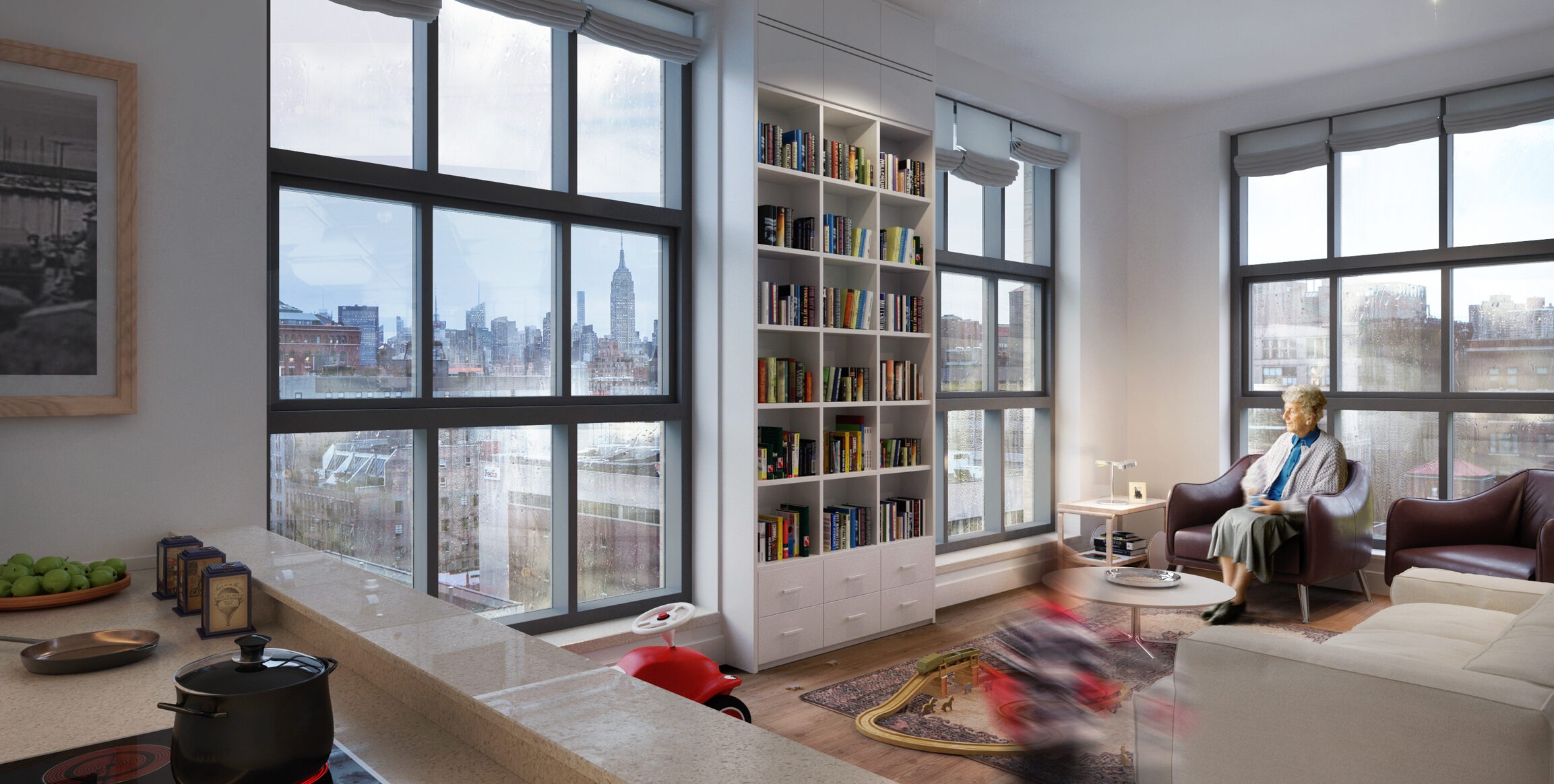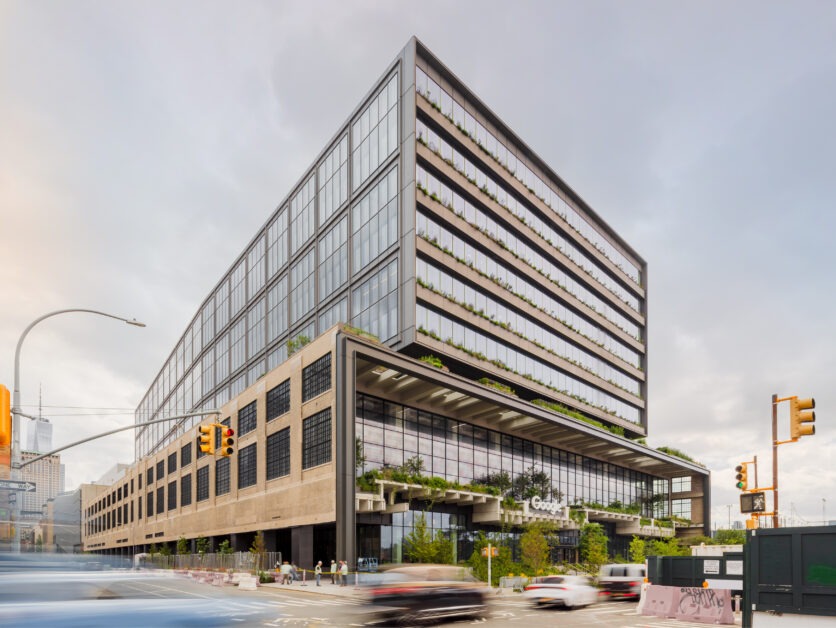550 Washington ULURP
In 2016, COOKFOX along with Atlas Capital and Westbrook Partners completed a ULURP—Urban Land Use Review Procedure—for redeveloping St. John’s Terminal that once stretched across three Manhattan blocks and bridged over Houston Street. The master plan called for a new residential community with mixed-income housing, including affordable and elder housing, market-rate rental housing and residential condo minimums. The plan also included new retail spaces, better streetscapes, and new green spaces. In addition, the plan improved access to Hudson River Park and to Pier 40 and generated critical funds to restore the pier to a state of good repair. The proposed design of environmentally responsive, ecologically integrated high rises represented an emerging building typology in New York that is focused on occupant health and connections to nature.
The design vision of the master plan interpreted the design economy of New York’s early high-rise icons, with massing assembled around finely sculpted towers, detailed with geometrically rigorous setbacks and planted terraces. We developed design guidelines that preserved the industrial character of the site with stone and brick, complemented by elegant, modern steel and glass details. Inspiration for the design at street level is drawn from the solid masonry construction, industrial multi-sash windows and architectural detail of the historic Hudson Square factories and printing press buildings.
Biophilic design defined the experience of the buildings, to support physical and mental health and well-being by prioritizing human connections with nature. The planted roofs and terraces promised direct connections to the natural world, and expansive views blurred the boundaries between interior and exterior. Day-lit corridors and other common spaces further enhanced connections to natural cycles of light, weather and seasons.
In 2017, the southern portion of St. John’s Terminal was transitioned to commercial use and became the site for a new workplace building for Google. In February 2022, design began on the northern portion of the masterplan for Clarkson Square, a two-building development of residential condominiums and affordable housing for seniors.
Collaborators
This project is developed by Oxford Properties.
